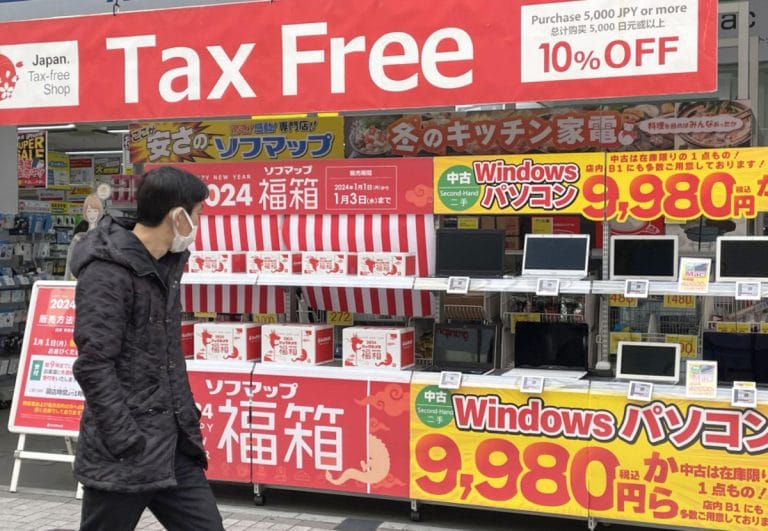🎧 Listen to This Article
In response to the increasing abuse of its tax-free shopping system, Japan will overhaul its Consumption Tax refund policy for foreign tourists starting November 2026, transitioning to a refund-at-departure model and tightening eligibility requirements.
Currently, Japan allows foreign visitors to avoid paying its 10% consumption tax (8% for essentials) at the point of sale, provided they present valid identification like a passport. However, the widespread resale of duty-free items in Japan, as revealed through investigations of high-volume buyers, has prompted legislative reforms in the 2025 tax bill, which is now under Diet consideration.
From Immediate Deduction to Departure Refund
Under the revised system, international tourists will pay full price, including consumption tax, at the time of purchase. Refunds will instead be processed at the airport upon departure after receipts are submitted and the goods are confirmed to be leaving the country. Refunds must be claimed within 90 days of the purchase.
This shift brings Japan closer to global VAT/GST refund norms and is designed to increase oversight while maintaining a favorable experience for legitimate travelers.
Key Changes in 2026 Reform
- Elimination of Spend Thresholds:
The previous minimum spend of 5,000 JPY per store per day and caps for consumables will be removed. Tourists can now make unlimited tax-free purchases, regardless of category or value. - Simplified Packaging and Classification:
Previous rules requiring specialized packaging for consumables like food and cosmetics will be scrapped. The outdated distinction between “general” and “consumable” goods may also be unified, easing the shopping process. - System Modernization:
Digitalized procedures and standardized verification tools will support the new airport-based system, streamlining tax refund claims while enhancing fraud control.
Background: Why the Reform?
A government probe in 2022 revealed that of 57 foreign visitors who each bought over ¥100 million worth of duty-free goods, only one exported the items. The rest left Japan without paying the required tax, contributing to ¥1.85 billion in losses. The updated system aims to stop such abuses while aligning with global standards.
Consumption Tax vs VAT
Japan’s Consumption Tax, while similar to VAT in concept, is levied only once at the point of final sale and is typically included in the displayed price. VAT, a standard in Europe and other economies, is collected at multiple supply chain stages and allows for input tax credits.
For further details, clarification, contributions, or any concerns regarding this article, please contact us at editorial@tax.news. We value your feedback and are committed to providing accurate and timely information. Please note that our privacy policy will handle all inquiries.



